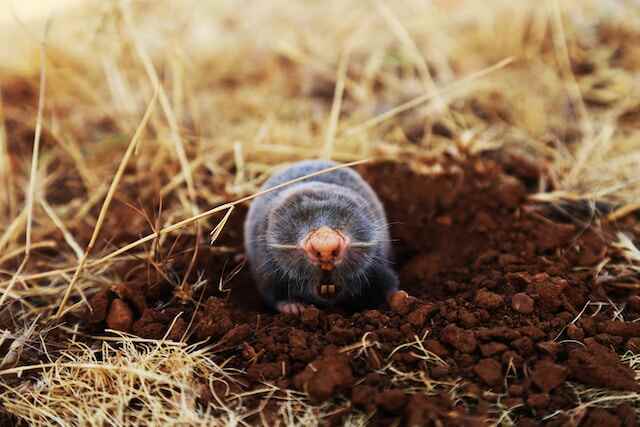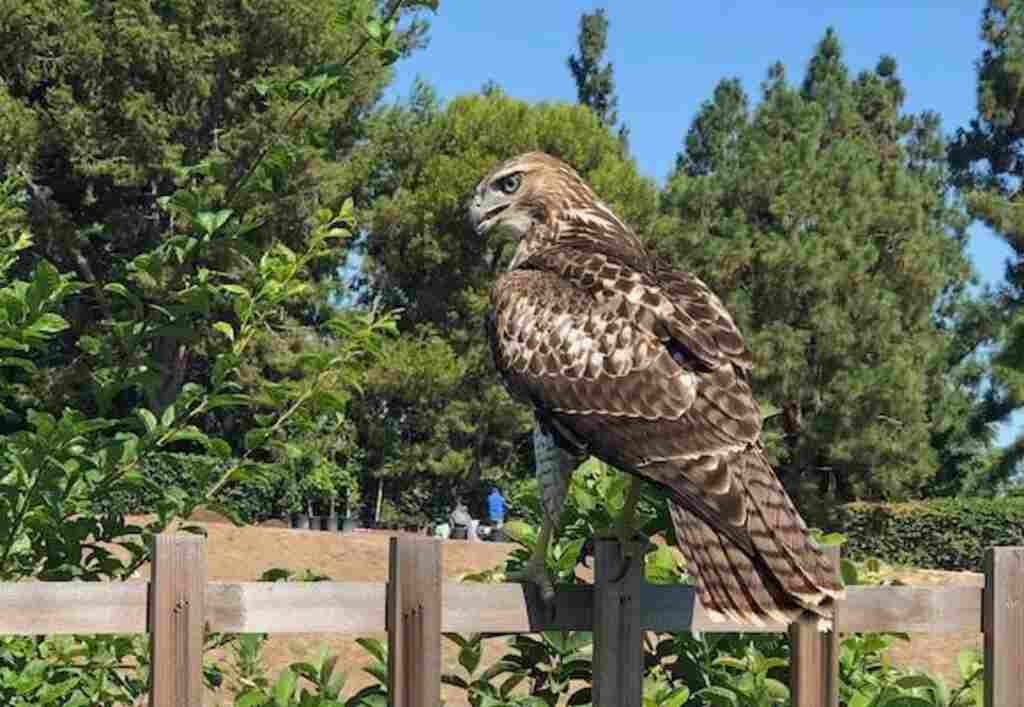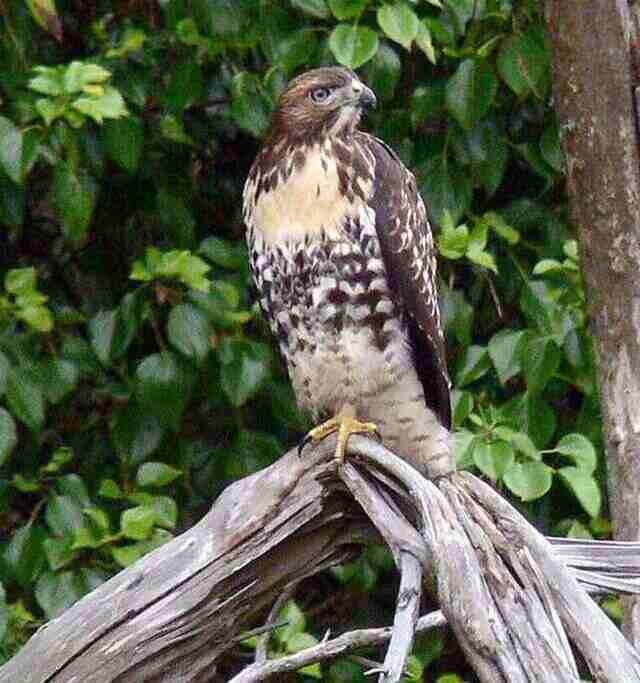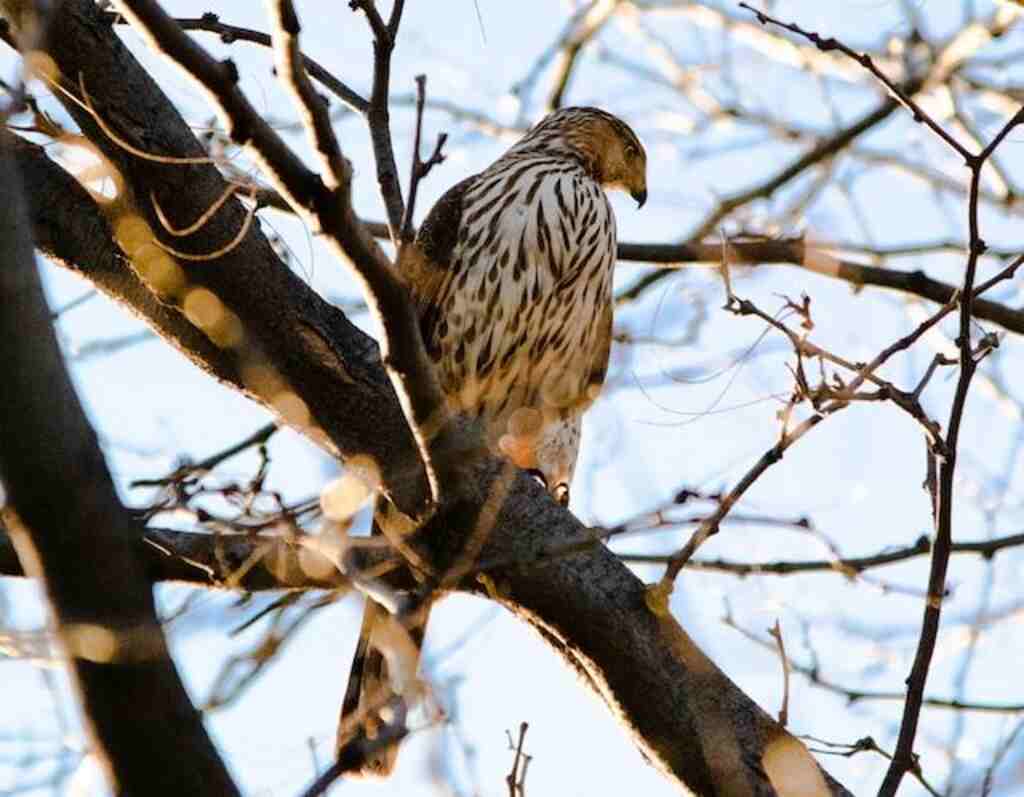In the realm of nature’s gladiators, we have the mighty hawks and the elusive moles. Hawks, renowned for their prowess in hunting small mammals, often leave us wondering if moles make it to their menu. Join us on an adventure as we unravel the truth behind this predator-prey dynamic.
We’ll dive deep into the biology and behavior of hawks and moles, exploring the fascinating adaptations that shape their hunting strategies.
From examining nutritional needs to potential risks, we’ll leave no stone unturned in our quest to answer the burning question: Do hawks eat moles?
Prepare for an engaging exploration of the hidden world beneath our feet and the aerial prowess that shadows it.
Table of Contents
- 1 Key Takeaways
- 2 Species of Hawks Known to Hunt Moles
- 3 Physical Adaptations that Enable Hawks to Hunt Moles
- 4 Hunting Techniques Used by Hawks
- 5 Prey Preferences of Hawks
- 6 Nutritional Value of Moles for Hawks
- 7 Potential Risks of Eating Moles
- 8 How Hawks Locate and Catch Moles
- 9 Do Hawks Eat Moles
- 10 Observations of Hawks Hunting and Eating Moles
- 11 Frequently Asked Questions
- 12 Conclusion
- 13 Author
Key Takeaways
- Some species of hawks, including the Northern Harrier, Cooper’s Hawk, Red-tailed Hawk, and Sharp-shinned Hawk, have been observed to hunt and feed on moles.
- Hawks have evolved physical adaptations and specialized hunting techniques to locate and catch moles.
- Moles are high in protein and fat, but have a relatively low calcium content and can carry diseases that can be transmitted to hawks upon consumption.
- Hawks continue to hunt and consume moles as a food source despite potential risks, and the ecological impact of hawks’ predation on mole populations requires further research.

Species of Hawks Known to Hunt Moles
Various species of hawks have been observed to hunt and feed on moles, including the Northern Harrier, Cooper’s Hawk, Red-tailed Hawk, and Sharp-shinned Hawk.
Hawk behavior plays a significant role in their ability to hunt moles, which are typically found in underground burrows.
Hawks have evolved to be aerial predators, with sharp talons and keen eyesight that enable them to spot prey from great heights.
They will often hover in mid-air, scanning the ground for any signs of movement before swooping down to grab their target.
Mole habitats can vary depending on the species, but they are commonly found in grasslands, fields, and meadows.
As moles are primarily nocturnal, hawks will hunt for them during the day when they are most vulnerable.
The physical adaptations that enable hawks to hunt moles include their sharp talons that can grip and hold onto prey, as well as their powerful beaks that can penetrate the hard soil of a mole’s burrow.
With these tools at their disposal, hawks are able to effectively hunt and catch moles, making them a significant predator in their ecosystem.

Physical Adaptations that Enable Hawks to Hunt Moles
Hawks possess remarkable physical adaptations that enable them to hunt moles effectively. One such adaptation is their sharp talons, which they use to grasp and hold onto their prey.
Additionally, their powerful beak allows them to tear apart the tough skin and flesh of the mole, making it easier to consume.
Finally, their keen eyesight allows them to spot moles from high up in the sky and swoop down to catch them with precision.
These physical traits have made hawks highly effective hunters of moles in their natural habitats.
Sharp Talons
With their razor-sharp talons, raptors are well-equipped to capture prey, including moles. Anatomy studies have shown that these birds of prey possess strong, curved claws that are designed for grasping and killing their prey.
Hawks, in particular, have adapted their hunting behavior to swoop down on unsuspecting moles and grab them with their talons.
These talons are also used to maintain a firm grip on the prey while the hawk tears into its flesh with its powerful beak.
It is through their incredible talons that hawks are able to effectively hunt and feed on moles, demonstrating their remarkable ability to adapt to their environment and prey.
Speaking of their powerful beaks, hawks also utilize these tools to great effect in their hunting tactics.
Powerful Beak
One cannot help but be impressed by the incredible strength and precision of a raptor’s beak, which is perfectly adapted for tearing through the tough skins and flesh of its prey.
Beak morphology is a crucial component of a hawk’s hunting strategy, as it allows them to subdue their prey with ease.
A hawk’s beak is curved and sharp, with a powerful grip that allows them to grab onto their prey and hold it firmly.
Additionally, the beak is used to sever the spine of small prey, while larger prey is dealt with by tearing off chunks of flesh.
The hawk’s beak is a formidable weapon, and it’s no wonder that they are such successful hunters.
As we explore the fascinating world of hawks and their hunting tactics, we must also consider their keen eyesight, which is another essential tool in their arsenal.
Keen Eyesight
The visual acuity of raptors is remarkable, allowing them to spot prey from great distances and track their movements with precision.
Keen eyesight is crucial for bird hunting, particularly for hawks, which rely on this sense to locate and capture their prey.
Hawks are known for their exceptional eyesight, which allows them to spot small rodents from high altitudes.
In fact, hawks have better visual acuity than most other birds of prey, as well as humans.
Their eyes are well-adapted to hunting, with a high density of photoreceptor cells and a large lens that helps them see in great detail.
This sets them apart from other birds, such as owls, which have larger eyes but less visual acuity.
Overall, the importance of keen eyesight in bird hunting cannot be overstated, and the comparison of hawks’ and other birds’ visual abilities highlights the unique adaptations that enable these birds to hunt successfully.
As we move to the next section about the hunting techniques used by hawks, it is important to note that their keen eyesight plays a critical role in determining how they approach their prey.

Hunting Techniques Used by Hawks
Hawks are known for their diverse hunting techniques, which allow them to catch a variety of prey including moles.
These birds of prey use a range of hunting strategies depending on their environment and the type of prey they are targeting.
For example, some hawks use their keen eyesight to spot prey from a distance, while others rely on their incredible speed and agility to catch prey in mid-air.
Hawks also use a range of hunting techniques on the ground, such as hovering and pouncing on their prey, or using their sharp talons to catch and kill their target.
These hunting techniques are essential for hawks to survive and thrive in their natural habitats, and they have evolved over time to allow these birds to adapt to changes in their environment.
As we explore the prey preferences of hawks, it becomes clear how these hunting techniques are used to catch specific types of prey, and how hawks have become masters of their craft.
Prey Preferences of Hawks
Intriguingly, the prey preferences of these apex predators reveal a fascinating insight into the delicate balance of ecosystems.
Hawks, being opportunistic hunters, have a diverse diet that varies according to their habitat preferences.
They feed on small mammals, birds, reptiles, and insects. However, their dietary diversity is not equal across different species of hawks.
Some hawks, like the Red-tailed Hawk, prefer small mammals such as rabbits, squirrels, and rodents, while others like the Cooper’s Hawk prefer birds.
Additionally, the Northern Harrier feeds on small mammals and birds, but they also have a fascination for insects. Lastly, the American Kestrel feeds on insects, small mammals, and occasionally small birds.
This diversity in prey preference among hawks highlights the importance of the availability of prey in their habitat.
The audience can appreciate the role that hawks play in maintaining the balance of ecosystems and the importance of protecting their habitats to ensure their survival.
Ultimately, this leads to the question of whether hawks eat moles and the nutritional value of moles for hawks, which will be explored in the subsequent section.
Nutritional Value of Moles for Hawks
Understanding the nutritional composition of common prey like moles is important for identifying potential imbalances in the diets of hawks, which could impact their overall health and fitness.
Moles are high in protein, which is essential for growth and maintenance of the hawk’s body tissues. They also provide a significant amount of fat, which is an important energy source for hawks.
Compared to other prey options, moles have a relatively low calcium content, which can be important for maintaining strong bones.
However, they are also high in phosphorus, which can interfere with calcium absorption and lead to potential bone problems.
Overall, moles can play an important role in the diet of hawks, providing a good source of protein and energy, but they should be balanced with other prey options to ensure a healthy and varied diet.
This leads us to the potential risks of eating moles, which we will explore in the next section.

Potential Risks of Eating Moles
The consumption of moles by birds of prey has potential dangers that should be taken into consideration.
While moles are a common prey for hawks, they have been found to carry various diseases, such as tularemia and toxoplasmosis, which can be transmitted to the hawk upon consumption.
Furthermore, moles often live in underground tunnels, making them difficult to catch, which can lead to injury for the hawk.
Additionally, the ecological impact of hawks consuming moles should also be considered, as moles play an important role in soil aeration and nutrient cycling.
Despite these potential risks, hawks continue to hunt and consume moles as a food source. The next section will explore how hawks locate and catch moles.
How Hawks Locate and Catch Moles
Locating and catching moles is a challenging task for hawks, comparable to a game of cat and mouse. Hawks have developed specialized hunting techniques to locate and catch moles due to their subterranean lifestyle.
These techniques include hovering in the air, scanning the ground for movement and listening for the rustling sounds that moles make while burrowing.
The role of habitat also plays a crucial role in the success of hawks hunting moles.
Hawks tend to hunt in open fields or grasslands where there is little vegetation, which allows them to see and hear better while scanning for movement.
Despite their hunting abilities, hawks do not pose a significant threat to the mole population, as they only catch a small number of them each year.
However, the impact of hawks hunting on mole populations is still an area of ongoing research.
Observations of hawks hunting and eating moles have provided valuable insights into their behavior and ecology.
Do Hawks Eat Moles
Yes, hawks are known to eat moles. Hawks are versatile predators and have been observed hunting and consuming a variety of small mammals, including moles.
Moles, with their subterranean lifestyle, are potential prey for hawks due to their presence in the same habitat. Hawks employ their hunting skills and adaptations to capture moles as part of their diet.
Observations of Hawks Hunting and Eating Moles
After discussing how hawks locate and catch moles in the previous subtopic, we will now shift our focus to the observations of hawks hunting and eating moles.
Hawks are known to be opportunistic predators and will prey on a variety of small mammals, including moles.
Behavioral patterns of hawks hunting and eating moles have been studied extensively, and it has been observed that hawks use their keen eyesight and aerial agility to locate and capture moles.
Once caught, the hawk will use its sharp talons to kill the mole before consuming it.
It is important to note that while hawks do prey on moles, the ecological impact of their predation on mole populations is not well understood and requires further research.
To provide a visual representation of the hunting and eating behaviors of hawks, the following table outlines the different stages of hunting and eating a mole.
| Stage | Description |
|---|---|
| 1 | Hawk locates mole through aerial observation |
| 2 | Hawk swoops down to capture the mole |
| 3 | Hawk uses talons to kill the mole |
| 4 | Hawk consumes the mole, starting with the head |
| 5 | Hawk may leave remnants of the mole or use them to build a nest |
As we continue to study the behavior of hawks and their impact on ecosystems, it is important to consider the potential effects of their predation on mole populations and the broader food web.
Frequently Asked Questions
What other types of prey do hawks typically hunt?
Hawks are skilled hunters with diverse hunting habits and strategies, preying on a variety of small mammals, birds, and reptiles. Their impact on the food chain is significant, as they help regulate populations and maintain a balanced ecosystem.
How long do moles typically live in the wild?
The wild mole lifespan varies depending on the species, with some living for only a year and others up to six years. Predator prey dynamics can also play a role in their survival, with hawks being one potential predator.
Do other animals besides hawks hunt moles?
The mole’s major predators are hawks, owls, and foxes, but they also face competition from other predators such as weasels. Predator competition plays a crucial role in mole population control, affecting the overall ecosystem equilibrium.
How do moles defend themselves against hawks?
Mole defense mechanisms against hawk hunting techniques include their ability to dig rapidly and create complex tunnel systems, as well as their keen sense of smell and hearing. They can also produce noxious odors to deter predators.
Are there any negative effects on the ecosystem if hawks were to stop hunting moles?
The absence of hawk hunting on moles may lead to an increase in mole population, which can negatively impact the ecosystem. However, hawks have alternative prey options in case of absence of moles, maintaining their ecological role.

Conclusion
In conclusion, hawks are known to hunt moles, with several species exhibiting this behavior. Their physical adaptations, such as sharp talons and keen eyesight, enable them to successfully catch and consume moles.
Hawks use a variety of hunting techniques, including hovering and swooping, to catch their prey.
While moles are not the primary prey of hawks, they do provide a nutritional value, with high protein and fat content.
However, there are potential risks associated with consuming moles, such as exposure to pesticides.
Despite these risks, hawks are able to locate and catch moles through their acute sense of hearing and vision.
Observations of hawks hunting and eating moles provide insight into their hunting behaviors and the ecosystem in which they operate.
By understanding the role of hawks in controlling mole populations, researchers can better understand the dynamics of predator-prey relationships and the impact of these relationships on the environment.
Overall, the study of hawks and their prey provides important insights into the interconnectedness of species in the natural world.



